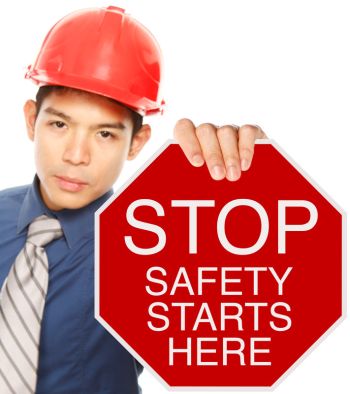In organizing your safety promotion campaign, here are three things you absolutely must stop doing if you want to get safety buy-in.

When marketing and promotion of safety goes up, incidents go down. Plain and simple, this works. Promoting safety raises awareness which causes people to be focused. Safety promotion is a key component of any good safety program. Ongoing campaigns for safety remind employees to make good decisions between safety meetings.
In organizing your safety promotion campaign, here are three things you absolutely must stop doing if you want to get safety buy-in:
1Going Negative - If you want to get your people to buy-in to safety, focus on what they gain instead of what they might lose. People don't go to financial planners because of what they might lose. They go to a financial planner for what they might gain.
Safety has been looking at the problem the wrong way. Going negative rarely brings a positive outcome. You don't buy-in to a healthy lifestyle because of what you might lose. You don't go to university because of what you might lose. But safety is focused on reminding you of what you might lose if you don't comply. Instead, show your people how their lives are enriched by safety - how they become more successful as the result of choosing safety as a lifestyle choice.
2Being Focused On Injury - Safety needs to stop the scare tactics and the threat-of-injury to get people into compliance. How many times have you heard (maybe even said), “if you don’t follow the safety plan … you might lose an eye … a finger … a leg … a life?” This is a message that is focused on what you might lose - not what you might gain. What other industry operates this way?
You don’t see the poor and destitute being the featured keynote speakers for meetings of financial planners. You don’t see the obese giving the keynote address at conventions of fitness trainers. Only in safety is a “don’t do what I did” message revered. Surviving a workplace incident does not make you an expert in safety. It makes you an expert in injury. Avoiding injury is not safety. Safety goes far beyond simply avoiding injury. But if all you talk about are ways of avoiding potential injury, you are making it difficult for people to see the benefit of safety.
By trotting out the horrific photos, videos and stories of workers being killed or maimed by an accident means that you are presuming all of your workers are choosing to ignore safety. You are not giving any of your people the benefit of the doubt and that can be dangerous because it creates a workplace that is built on negatives. It is nearly impossible to feel motivated in a workplace dominated by scare tactics and fear-based decision-making. Knowing that you are concentrating on the worst, it is difficult to give your best.
3Talking “At” Employees - Safety has been stuck in a 1950's model - top-down model of compliance; absolutes, rules, regulations, consequences and old-fashioned hierarchies. Luckily for compliance, it has managed to continue to survive simply because most of the safety industry operates in the same way.
Preparing an onslaught of boring PowerPoint slides does not encourage discussion. It encourages disengagement. People will not buy-in to anything they are disengaged from. So, make sure your messaging is not a lecture - but a discussion.
As companies start to move toward a safety leadership and partnership model, those companies will emerge as those that are able to attract the top performers and the better employees who already embrace safety as a set of values for themselves. Those values will be in alignment with the corporate values of their employers.
Companies that have learned how to talk “with” their employees instead of “at” them, are the companies capable of finding qualified workers willing to buy-in to the safety program. Employees will resist that which they are forced to do but are willing to buy-in given a choice and plenty of positive reasons why safety is a gain for them.
Have heart-to-heart discussions with each of your people to determine their level of safety consciousness. Take action. Stop hoping that your compliance policy is going to get you to Zero and keep you there. It will not.
If you want a little more help in creating positive safety communication, download my free e-book, 7 Nuts ‘n Bolts Strategies For Safety Communication below.



